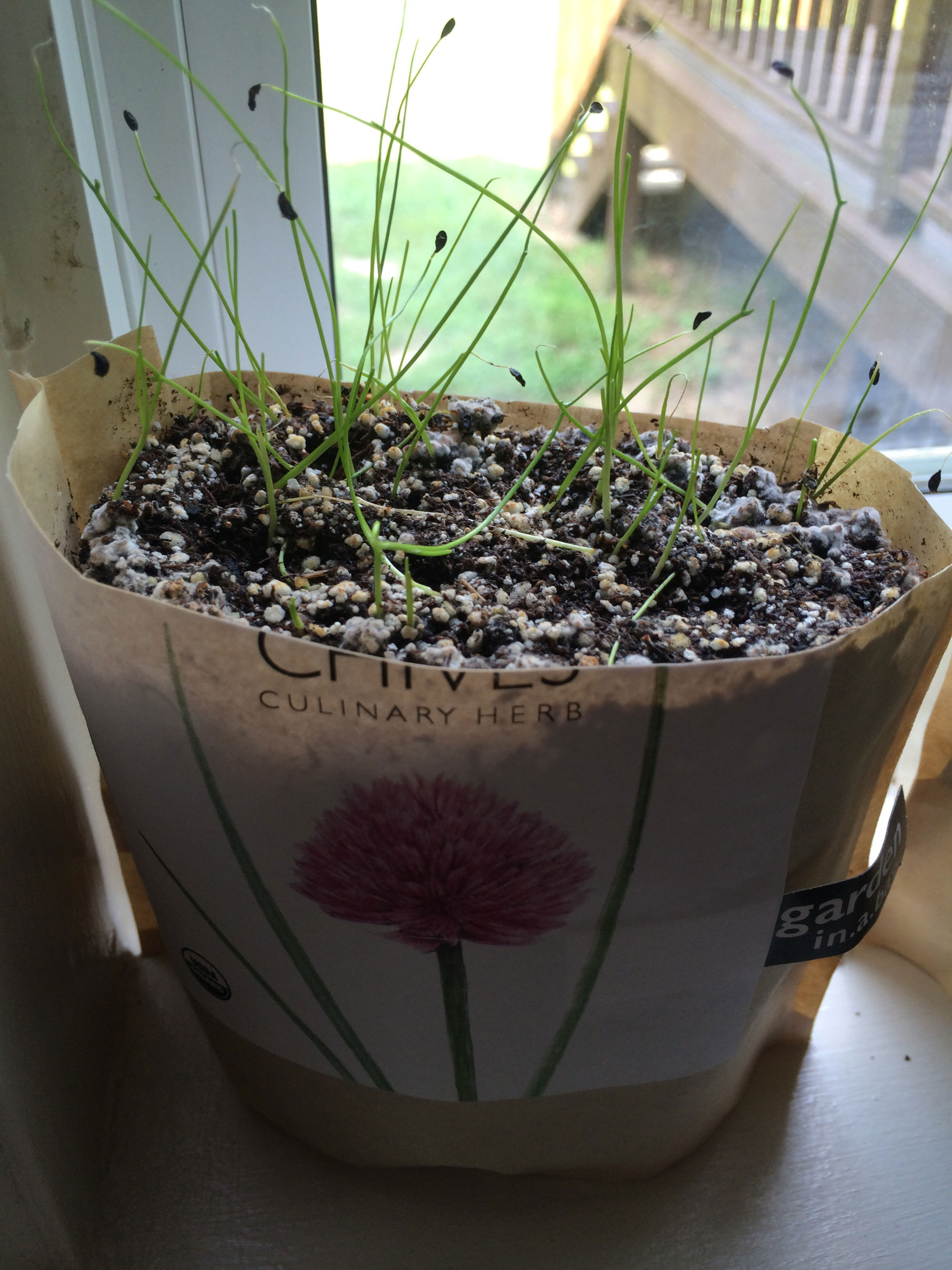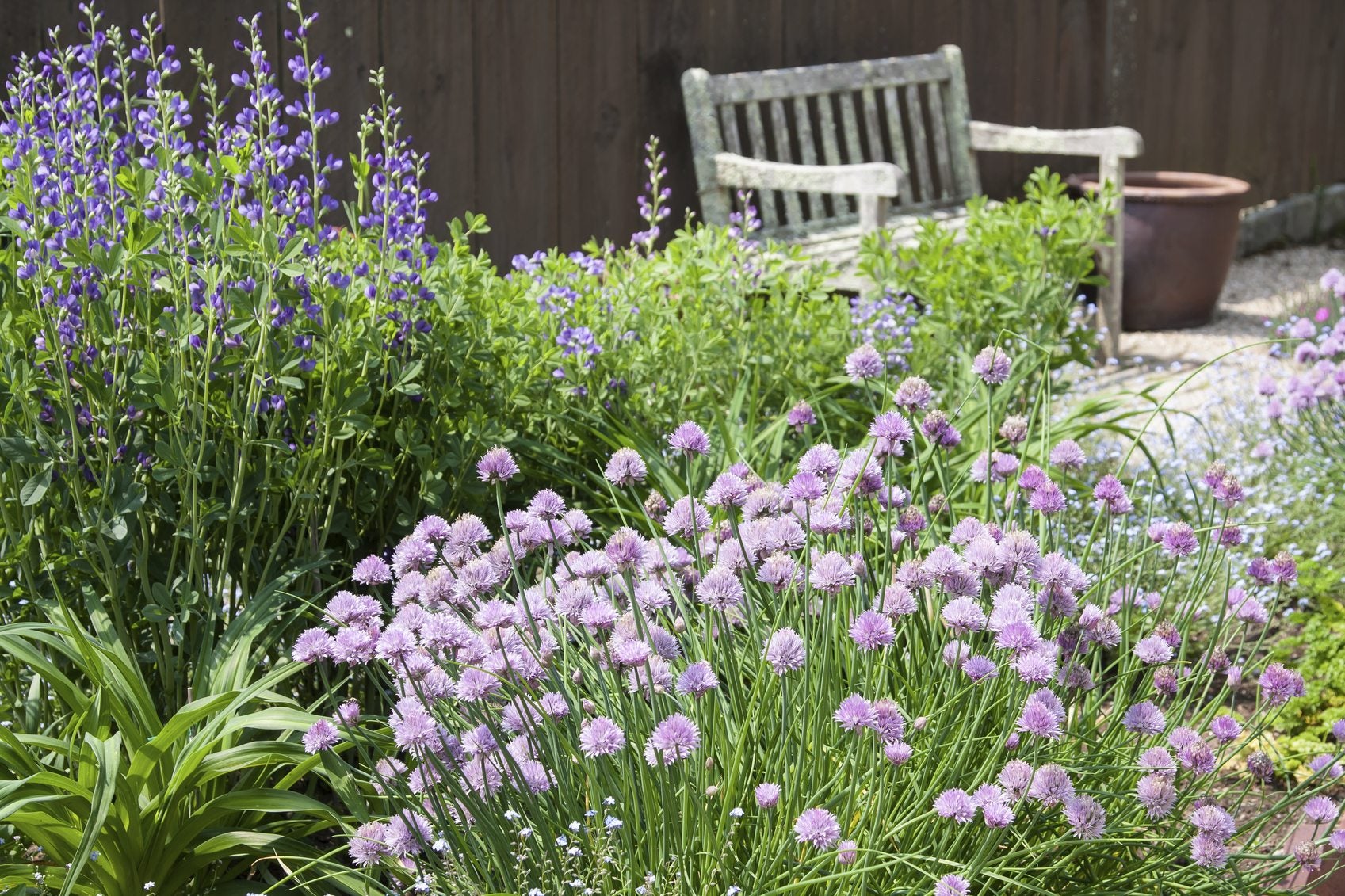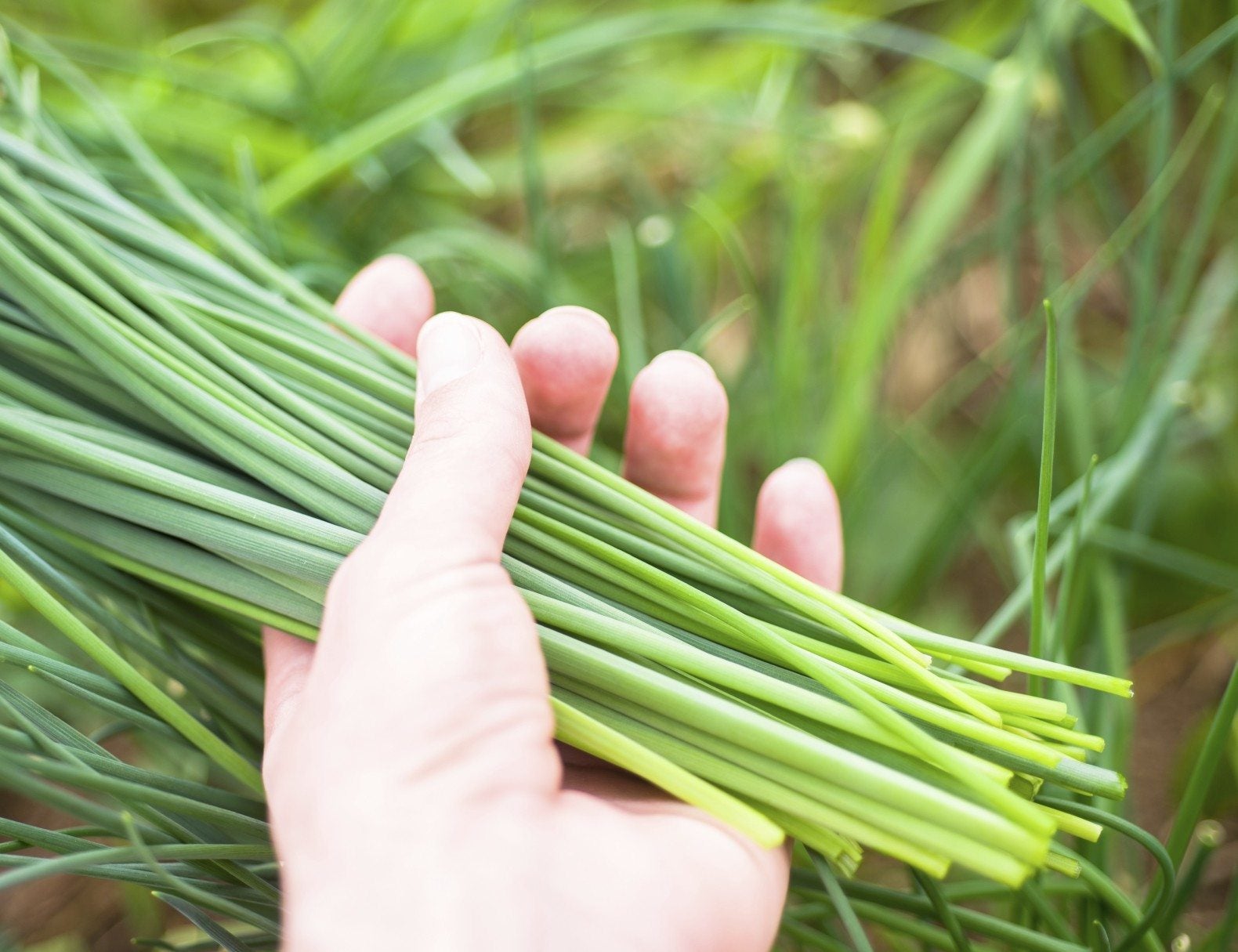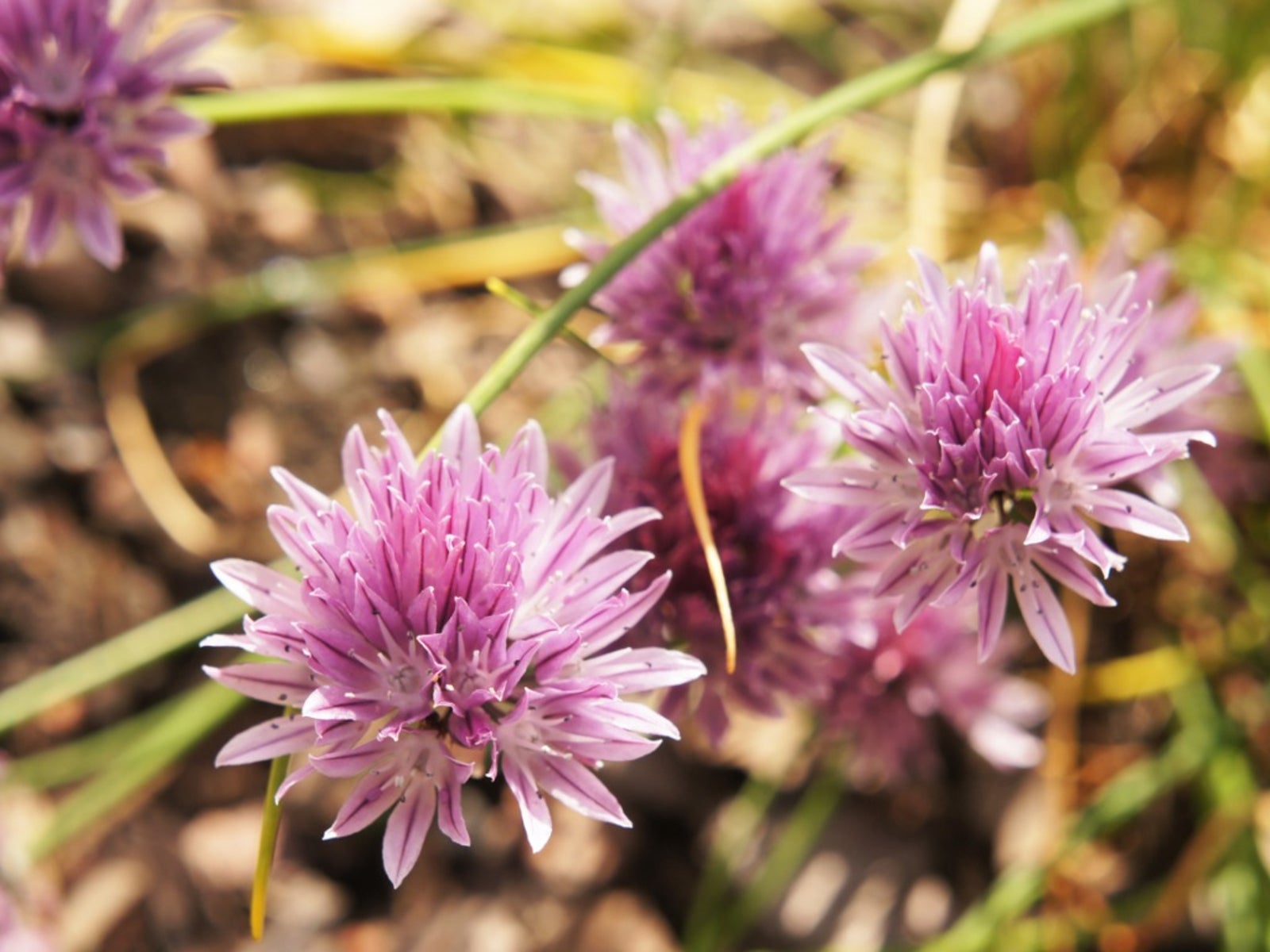Chive Seed Planting: Tips For Growing Chives From Seed

Chives (Allium schoenoprasum) make a wonderful addition to the herb garden. In gardens throughout France, the herb is almost obligatory since it is one of the ‘fines herbes' traditionally combined with chervil, parsley, and tarragon to flavor chicken, fish, vegetables, soups, omelets, and salads. Chive seed planting is the most common method of propagation. So, how to grow chives from seed? Let's find out.
Chive Seed Propagation
Chives are grown primarily for their culinary uses, but the herb may also be grown for its lovely, light purple flowers and flourishes in containers as well as in the garden proper. A member of the onion or Amaryllidaceae family along with garlic and leeks, chives are native to northern Europe, Greece, and Italy. This hardy, drought tolerant perennial grows to between 8 and 20 inches (20-51 cm.) high in clumps via underground bulbs. Chives have hollow, round leaves much like onions, although smaller. I propagate my chives by dividing my massive decade-old chive plant but growing chives from seed is the common method for starting this herb; unless you live next door to me, in which case, please, come get one!
“How To” Guide to Chive Seed Planting
Growing chives from seed is a simple process, as seed germinates easily, albeit slowly. Sow seed ½ inch (1 cm.) deep in flats of peat-based soilless mix. Keep the flat consistently moist and in temps of between 60 and 70 degrees F. (15-21 C.). At four to six weeks and once all danger of frost has passed, the chive seedling can be transplanted outside. Planting chive seeds can also occur directly outside in the garden once the soil has warmed. Space plants 4 to 15 inches (10-38 cm.) apart in rows 20 or more inches (51 or more cm.) apart. As mentioned, propagation can be from chive seed, transplants, or division. Divide the plants every two to three years, separating new plants into clumps of about five bulbs each. When planting chive seeds, the soil should be rich, moist, and high in organic matter with a soil pH of between 6 and 8. Prior to planting the seedlings, amend the soil with 4 to 6 inches (10-15 cm.) of composted organic matter and apply 2 to 3 tablespoons of all purpose fertilizer per square foot of planting area. Work this in down to 6 to 8 inches (15-20 cm.) of soil. Chives thrive in full sun, but will do well in partial shade. Fertilize the plants a few times during the growing season with bone meal and manure or a well-balanced commercial fertilizer. Side dress with 10 to 15 pounds (4.5-7 kg.) of nitrogen two times during the growing season and keep the herb consistently moist and the area weeded.
Gardening tips, videos, info and more delivered right to your inbox!
Sign up for the Gardening Know How newsletter today and receive a free copy of our e-book "How to Grow Delicious Tomatoes".

Amy Grant has been gardening for 30 years and writing for 15. A professional chef and caterer, Amy's area of expertise is culinary gardening.
-
 Looking For Plants To Give You The Soft And Fuzzies? Try These 5 Fuzzy Leaf Plant Options
Looking For Plants To Give You The Soft And Fuzzies? Try These 5 Fuzzy Leaf Plant OptionsLovers of texture, drama, silver foliage and tactile plants will adore these special sensory garden additions. These fuzzy leaf plant options will leave you all aglow
By Susan Albert
-
 Get Ready For A Summer Of Hummers! Grow These Full Sun Hummingbird Plants and Flowers
Get Ready For A Summer Of Hummers! Grow These Full Sun Hummingbird Plants and FlowersIf you’re lucky enough to enjoy a sunny backyard, make sure you are maxing out on your pollinator opportunities and grow these full sun hummingbird plants and flowers
By Tonya Barnett
-
 Chive Companion Plants – Companion Planting With Chives In The Garden
Chive Companion Plants – Companion Planting With Chives In The GardenIf you are planning a kitchen garden and wondering what to grow near chives, wonder no more. There are a host of perfect chive plant companions for texture, color, and flavor. Use the information and suggestions in this article to help get started.
By Bonnie L. Grant
-
 Chive Plant Harvest: How And When To Harvest Chives
Chive Plant Harvest: How And When To Harvest ChivesChives make a great addition to the garden, both for their onion-tasting leaves and pretty blossoms. The question is, when and how to harvest chives. Click this article to find out more information regarding the harvesting and storing of chives.
By Amy Grant
-
 Wild Chives Identification: Are Wild Chives Safe To Eat
Wild Chives Identification: Are Wild Chives Safe To EatWe cultivate our chives amongst our herb beds, but did you know that wild chives are one of the most common and easy-to-identify wild-growing plants? What are wild chives and are wild chives edible? Click here to find out.
By Amy Grant
-
 Controlling Chives: Tips On Ridding Lawns Of Chive Plants
Controlling Chives: Tips On Ridding Lawns Of Chive PlantsA problem with growing chive plants is that they're not always well behaved. They can escape their boundaries and pop up in places where you don't want them - including your well-tended lawn. Read this article for helpful tips for controlling chives.
By Mary H. Dyer
-
 How To Grow Chives Indoors
How To Grow Chives IndoorsGrowing chives indoors make perfect sense so that you may have them near the kitchen. Read this article to learn more about how to grow chives indoors so you can have easy access to the plant year-round.
By Becca Badgett
-
 How To Plant Chives - Growing Chives In Your Garden
How To Plant Chives - Growing Chives In Your GardenIf there were an award for "easiest herb to grow", growing chives would win that award. Learning how to grow chives is so easy that even a child can do it. Get growing tips for chives in this article.
By Heather Rhoades